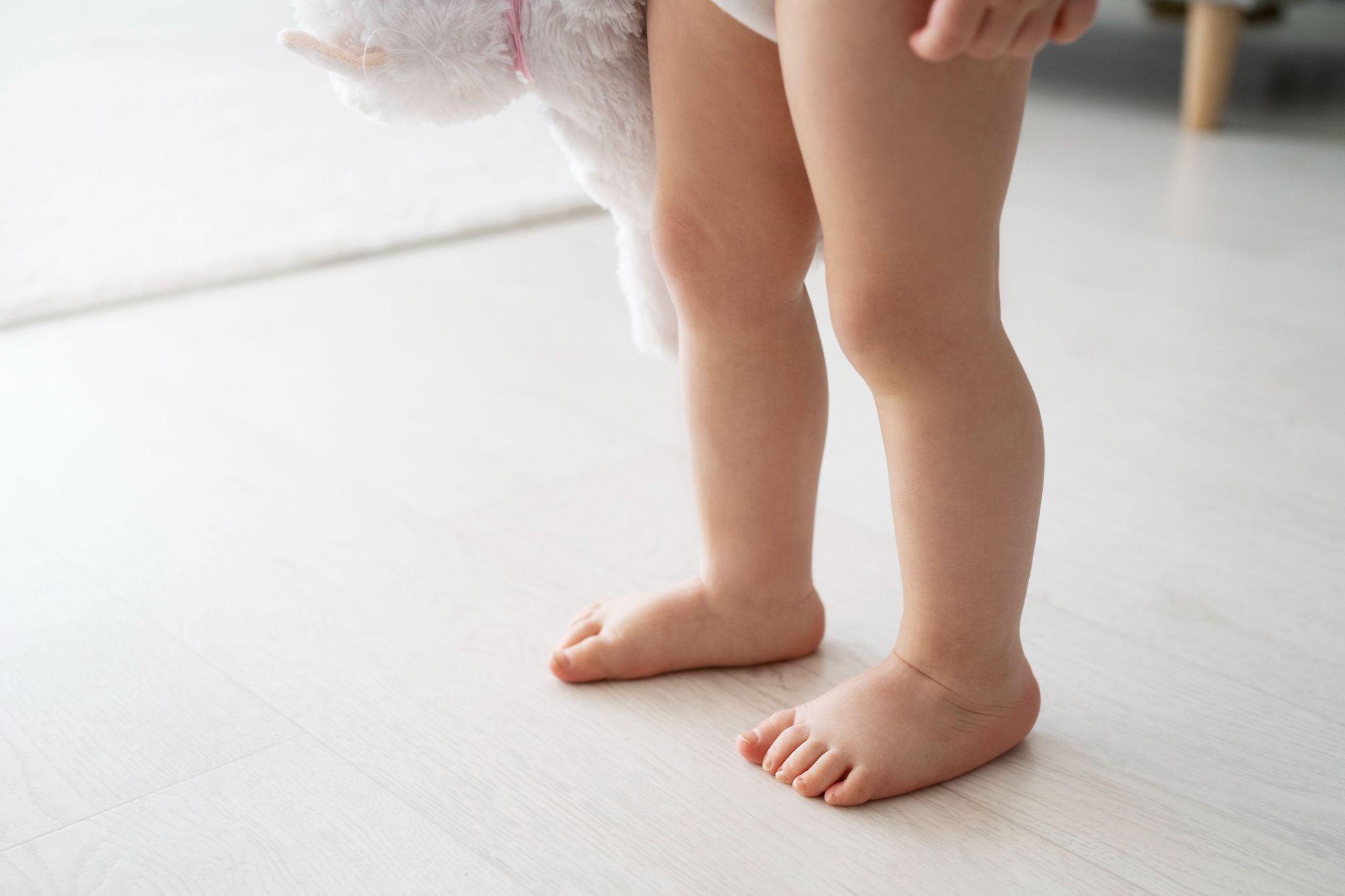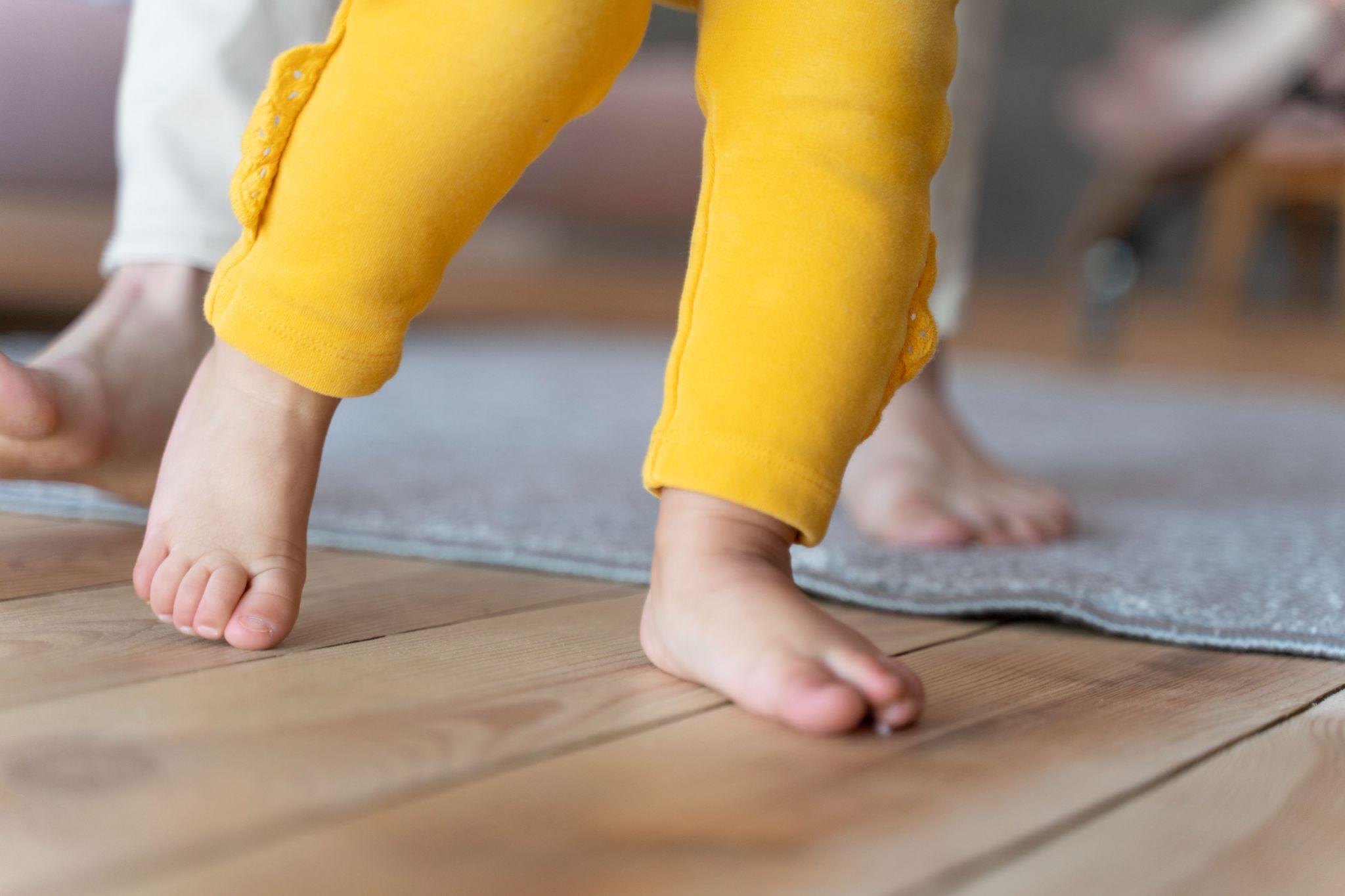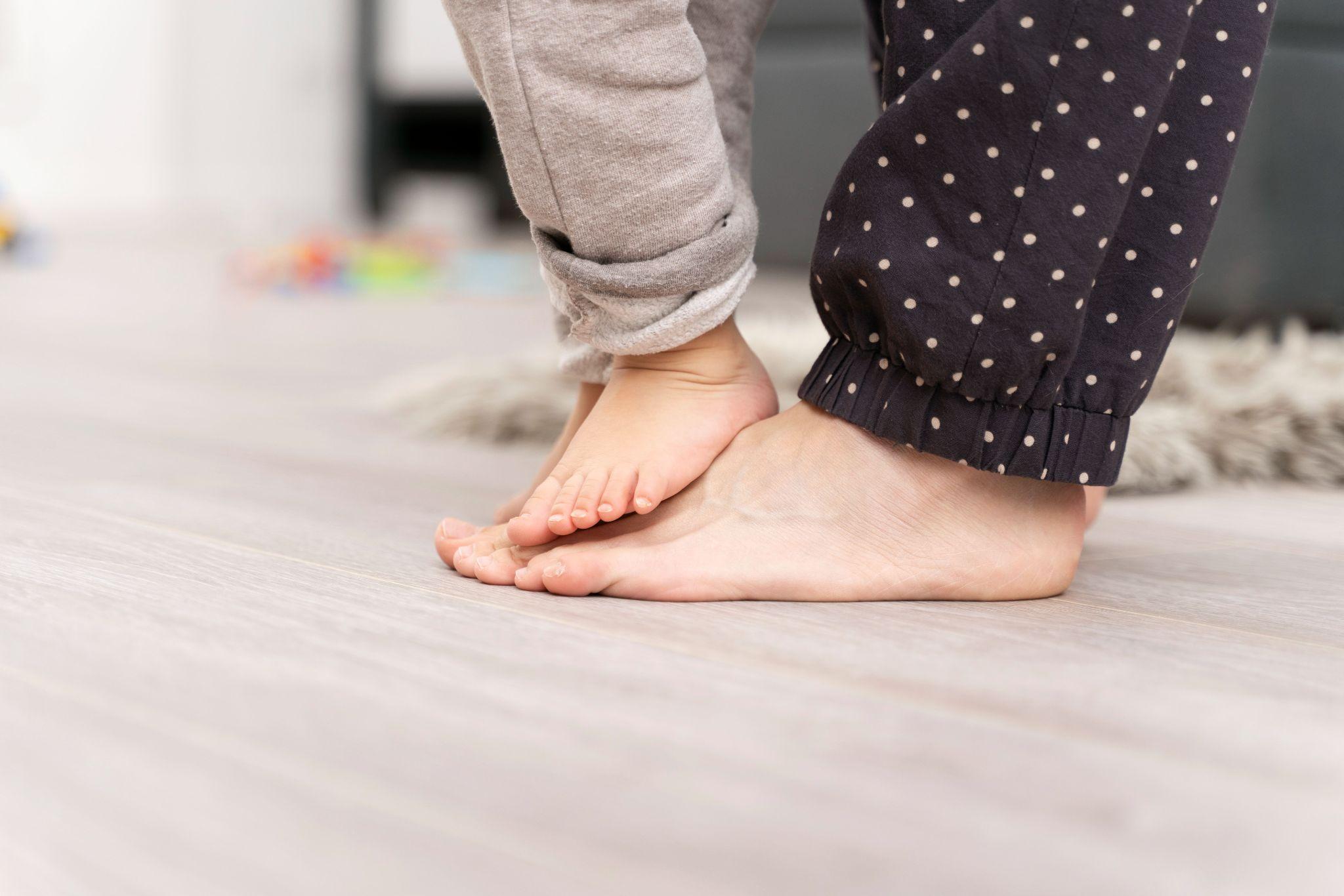Children's Flatfoot: When Do Kids Need Orthotics & What Parents Need to Know

Flatfoot in children is a condition where the arch of the foot is either very low or not visible when the child stands, giving the foot a flat appearance.
Flatfoot or pes planus is a condition in children where the arch in the foot appears to collapse or flatten when they stand. Flat feet are present in every infant and grow more substantial and acquire an arch with time. But in certain people, abnormal failure in the development of the arch and flatfoot during infancy occurs.
The parents worry if they see the child has flat feet, but this is normally painless and normal most of the time. The dilemma is how to determine if flatfoot needs medical attention or if orthotics are required. Orthotics are not necessary; treatment is only necessary if it hurts, impacts the gait, or generates postural problems. An awareness of normal development compared to abnormal flatfoot provides children with appropriate and timely intervention.
Etiology of Flatfoot in Children
There could be different reasons for flatfoot in children. Familial or genetic predisposition is the most common etiology; if the parent is flatfooted, then their child will also have flat feet.
The second reason is ligamentous laxity or hypermobility, where the ligaments are loose enough that they will not provide support to the foot arch. Flatfoot will also be caused in some children as a result of abnormal gait or posture, especially when they rotate their feet inward toward the midline (overpronation).
In rare situations, neuromuscular or structural disease, such as cerebral palsy or tarsal coalition (foot bone fusion), may lead to a stiff and uncorrectable flatfoot that will need specialist intervention.
Classification of flatfoot
An effective treatment plan is attained via knowledge about the type of flatfoot.
- Flexible flatfoot: Most frequent type, where the standing arch is level but can be felt in sitting or toe standing. Painless, and no treatment is needed.
- Rigid flatfoot: The arch never collapses because of flatness, even in off-weight or toe standing. It may be associated with stiffness, pain, or congenital bony deformity.
- Asymptomatic and symptomatic flatfoot: There are some children who are normal (asymptomatic), while other children are painful, fatigued, or limping (symptomatic).
Warning Signs & Symptoms Parents Should Be Aware Of
Most children who have flexible flatfoot are not symptomatic. But there are some signs that parents should be aware of.
If your child complains all the time of pain in the feet, weak legs, or ankle pain, then this can be brought about by overuse of the ligaments and muscles due to misalignment. Children who have symptomatic flat feet also don't like to run, jump, or walk for long distances.
You might notice uneven wear on shoes, particularly on the inside of the shoe, or catch your child stumbling or limping often. Hips or knees are likely to ache due to the unevenness of the kneecaps. Any one of them requires a visit to a pediatric orthopedist or podiatrist.

Rigid flatfoot, which does not change shape when standing or sitting, can indicate an underlying bone or joint problem and may require medical attention.

Rigid flatfoot, which does not change shape when standing or sitting, can indicate an underlying bone or joint problem and may require medical attention.
Consulting a Doctor or Specialist
Parents usually inquire how many years a flatfoot will naturally correct itself. Arches in the majority of children become fully developed at 7 to 8 years of age. If the foot remains flat at this time or the occurrence of other symptoms such as pain, swelling, or stiffness is observed, it is advisable to consult an expert.
You also need medical guidance if:
- Flatfoot in your child is becoming stiff or is getting worse progressively.
- Pain in routine activities or sports.
- A deformity or swelling of the ankles or feet that is abnormal.
- Flatfoot is also defined as an association with neuromuscular disease, such as cerebral palsy or muscular dystrophy.
The initial assessment will decide whether or not orthotic treatment or other therapy is needed to correct posture and avoid further involvement.
Orthotics: When Are They Needed?
Not every child who has flat feet requires orthotics. Asymptomatic flexible flatfoot (involvement of flexibility and pain) is not usually treated or even requires specialty shoes. Orthotics, however, are required in certain cases.
If the child complains of unusual gait (e.g., in-rolling of the foot while walking), fatigue, or pain, orthotics can align the foot in the correct direction to minimize pain. Orthotics are useful when pain is experienced in the knees or hips as an indirect result of faulty alignment of the foot or rigid big flatfoot.
Orthotics accomplishes this by supporting the arch, diverting pressure, and allowing proper posture. Orthotics straighten the normal leg and foot, preventing overstretching of the joints and muscles. Orthotics can help enhance performance and prevent the risk of injury due to poor foot biomechanics in sports-playing children and athletes.
The Different Orthotic Supports
There are several categories of orthotic appliances based on the degree and severity of the child's condition.
- Prefabricated arch supports: Stock inserts in a variety of sizes, mild issues, and children who are likely to outgrow custom units within a few months.
- Custom orthotics: Unrestricted to the foot of the child, they offer personalized support and are suitable for more than moderate to severe cases or in instances of extreme overpronation with drastic impacts on posture and gait while walking.
- Supportive shoes: High-arched, strong-soled, motion-control shoes are excellent for flat feet in children. Poorly supportive, weak shoes like slippers or flip-flops should be avoided because they contribute to the pronation and don't support the form.
From time to time, check-ups and realignments will need to be performed as your child progresses, since foot form and walking habits change with the years.

Proper footwear with good arch support and cushioned soles can help relieve discomfort in children with symptomatic flatfoot.

Proper footwear with good arch support and cushioned soles can help relieve discomfort in children with symptomatic flatfoot.
Non-Orthotic Management Options
Conservative therapies are typically used in the majority of children for strengthening the feet and imparting flexibility, with the exception of orthotics.
Strengthening activities like toe curls, grasping small objects with the toes, or walking with bare feet on the tip of the toes can be employed to contract the arch muscles. Calf and Achilles tendon stretching should also be performed, especially if tightness is on the flat side of the foot.
Gait therapy and physiotherapist balance training can even enhance posture and coordination. Activity can even be altered by parents, i.e., no high-impact, hard-surfaced activities like jumping, to assist in reducing stress on the arches, as well.
Normal body weight is also an issue because obesity causes extra stress on the feet, thus exacerbating flatfoot symptoms.
Surgical Intervention: Rare but Real
Surgery is usually not warranted in flatfoot children but is reserved for severe, symptomatic flatfoot that is unresponsive to orthotics or conservative treatment.
Surgery would be indicated if a fixed flatfoot is severely deforming or painful. Surgery aims to realign the bones, tighten up the arch, and erase nagging pain that recurs. Surgery is never considered a first course of action and is only done after the bones ossify in a child. Orthotics, exercise, and good footwear can be used to correct the condition successfully in most cases.
Conclusion
Flatfoot is a typical development in most children, and, as time goes by, the arches will form. Orthotics are for the occasional instances of flatfoot hurting, tiring, or functionally limiting. It is the symptoms that parents should worry about, not the appearance of the feet alone.
Through proper combined stretching, shoe fitting, and, if necessary, orthotic support, children can develop healthy foot position and posture. Early intervention, in the proper hands of a trained pediatric professional, prevents small problems from becoming long-term posture or gait issues. And remember, each child's feet are different; comfort, function, and ease of movement are crucial.
FAQs
1. Can flatfoot be outgrown in children?
Yes. Flatfoot will self-correct by age 7 or 8 as the normal arch forms. It is only necessary to test if the flatfoot continues beyond this age or is painful.
2. Must all children with flatfoot be given orthotics?
No. Orthotics are only to be prescribed for those children with pain, fatigue, or gait difficulties. Non-dysfunctional, painless, flexible flatfoot requires no treatment.
3. Is barefoot walking good or bad for flat feet?
Walking barefoot on soft ground like sand or grass will help to develop foot muscles and arches. Walking barefoot on hard ground repeatedly for long distances will result in straining the foot and should be avoided.
4. Is flatfoot likely to cause future knee or back pain?
Yes, if flatfoot is not corrected with improper alignment, then improper alignment will create improper posture, which will create back, hip, or knee pain. That can be avoided with orthotics and good shoes.
5. Are custom orthotics superior to off-the-shelf inserts for kids?
Custom individual orthotics provide personalized support based on the child's unique foot shape and gait. Mild flatfeet can be treated with over-the-counter inserts, but custom orthotics correct moderate to severe flatfoot or chronic flatfoot.